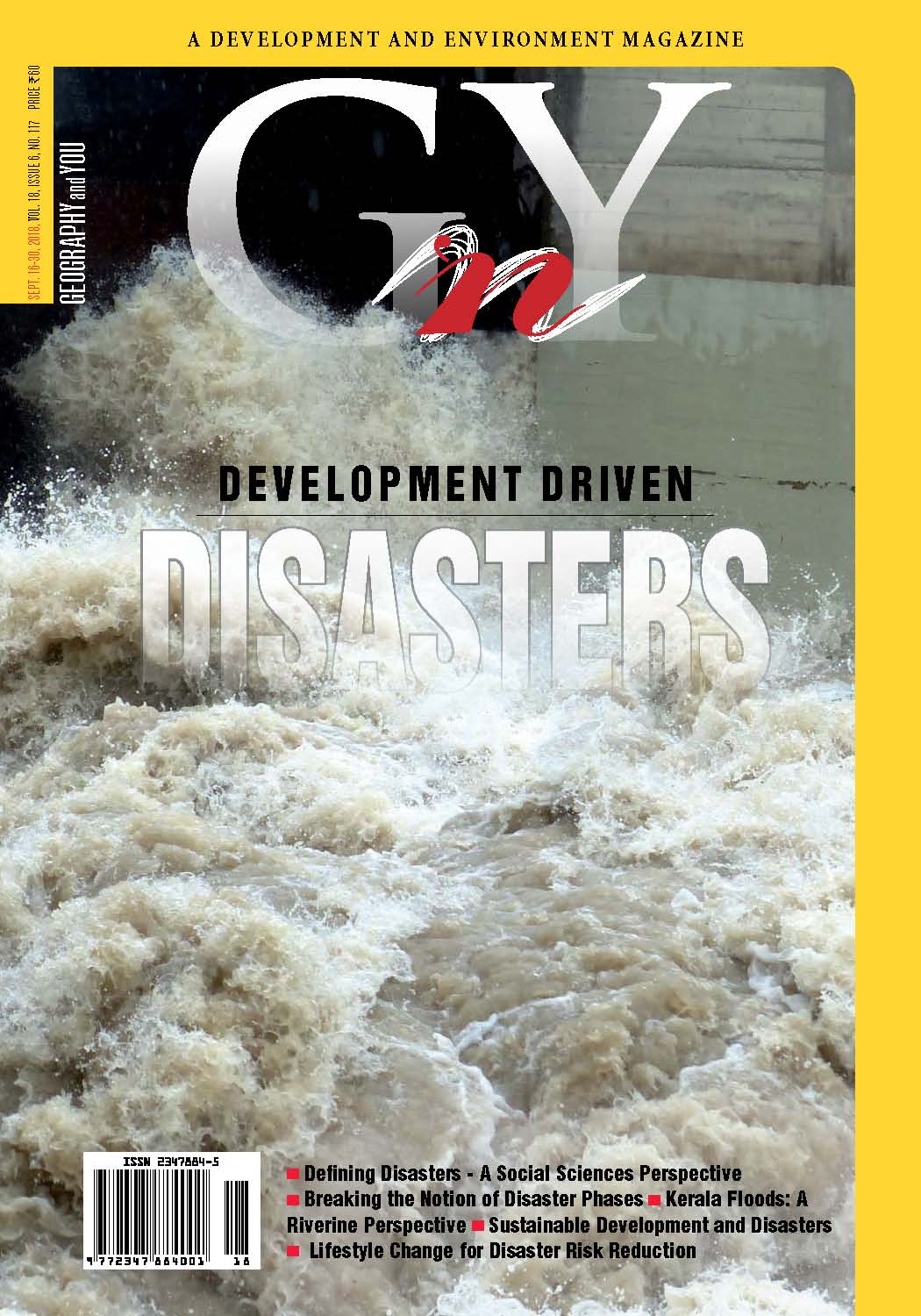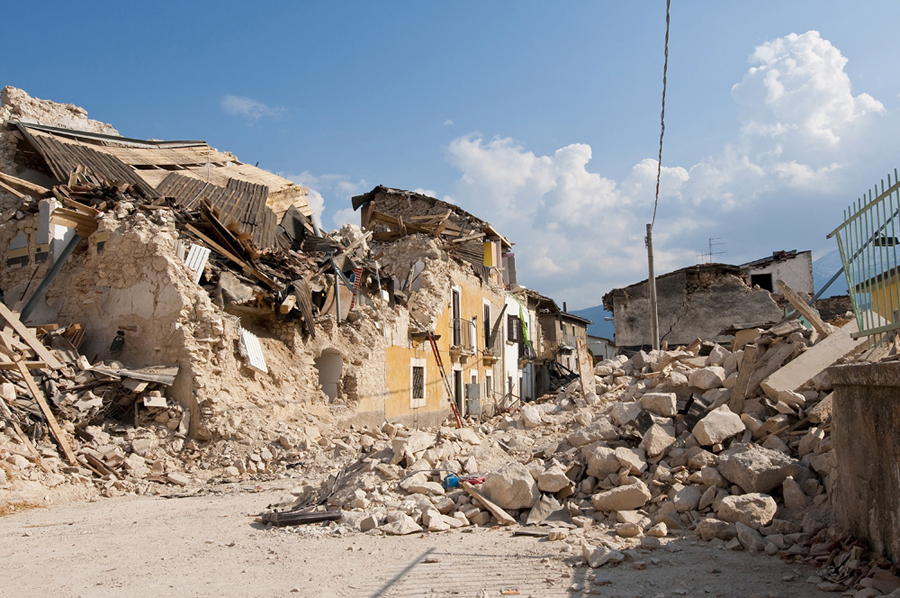
Inside this issue
UNDERSTANDING DISASTERS
The definition of disaster has been continuously changing due to the vulnerabilities and risks attached to it. However, despite being defined as natural, disasters tend to have political, cultural, economic and social impacts as well.
Disaster phases are not linear. They may overlap and even occur simultaneously. The complexities in disaster phases are attributed to the social, cultural, economic, political forces influencing the web of flow— and disaster risk management needs to consider moving beyond conventional notions of phases.
DEVELOPMENT DRIVEN DISASTERS
River management in India must be made a priority and strict laws should be enforced to preserve the river space. The floods in Kerala serve as a reminder that serious measures must be taken by the government to combat these natural phenomena.
Rapid urbanisation, combined with changing courses of river bodies are posing new challenges for flood management. The existing mechanisms for flood risk mitigation are inadequate for addressing the risks caused by floods in the present scenario. Recent floods in Kerala, Tamil Nadu, Jammu and Kashmir and Uttarakhand are cases in point.
Rapid urbanisation in India that has taken place in recent years has paid little attention to preservation of catchments and wetlands. In the absence of these—absorbing rainwater and enabling groundwater recharge, the ill effects of extreme rainfall events has been compounded.
DISASTER MANAGEMENT
A psychological change and not just rules, regulations and institutions are needed for disaster risk reduction. Voluntary compliance of safety norms can be brought about only through sustained investment and creation of innovative ways of risk communication.
Given India’s population, its density, concentration in particular geographies, and weak state of its institutions of governance, adopting precautionary measures to disaster preparedness becomes imperative. These measures should have roots in deep, systemic scientific analysis based on flexible, responsive governance structures.
IN CONVERSATION WITH
B H Anil Kumar, Executive Director, NIDM, speaks with G’nY on disaster management and explains how the related risks can be mitigated.
Rakesh Kumar, Director, CSIR- NEERI, Nagpur talks to G’nY about the impact of air pollution and the measures being taken to reduce its levels in Delhi.
In brief
My father-in-law has very recently committed himself to the building of a fine temple. A noble thought indeed, except that the temple precincts hug the cross-valley slope of the tumultuous Burhi Gandak. The naughty imp of a river has till date eluded the training of its riotous waters. With an incre

